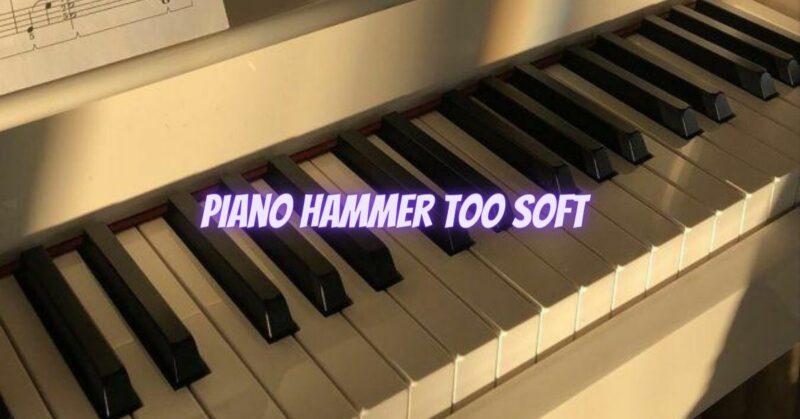A soft piano hammer can be frustrating for pianists, as it can result in a lack of volume and projection in the sound. This issue is often caused by wear or compression of the hammer felt, which affects its ability to strike the strings with sufficient force. Fortunately, there are steps you can take to address a soft piano hammer and restore its responsiveness. Here’s a guide on how to fix a soft piano hammer:
1. Diagnose the Problem:
- Before attempting any adjustments, it’s essential to verify that the hammer is indeed too soft. Play the affected key multiple times and compare its sound with other keys. If you notice a significant difference in volume and response, you likely have a soft hammer issue.
2. Inspect the Hammer Felt:
- Carefully examine the hammer felt for signs of wear, flattening, or compacting. Over time, the felt on the hammer can lose its resilience, leading to reduced hammer action.
3. Hammer Voicing:
- Voicing involves reshaping and revitalizing the hammer felt to restore its optimal responsiveness. This process is best performed by a skilled piano technician with experience in hammer voicing.
4. Needle Voicing:
- Needle voicing is a technique used to soften or harden specific sections of the hammer felt. A technician uses a voicing needle to manipulate the felt fibers, which can help achieve the desired tone and responsiveness.
5. Hardening Solution:
- In some cases, a technician might use a hardening solution to rejuvenate the felt and increase its firmness. This solution is applied strategically to specific areas of the hammer felt.
6. Hammer Filing:
- If the hammer felt is uneven or misshapen, a technician might use a filing tool to reshape it. Filing can improve the consistency of the hammer’s striking surface, leading to a more balanced and focused sound.
7. Regulation and Adjustment:
- Proper regulation of the piano action is crucial to ensure that each hammer strikes the strings with the correct force. A technician can make adjustments to the piano action, including checking hammer-to-string distance, alignment, and balance.
8. Seek Professional Help:
- Attempting to fix a soft piano hammer without the necessary skills and knowledge can potentially cause further damage. For the best results and to avoid any complications, it’s recommended to consult a qualified piano technician.
9. Regular Maintenance:
- Regular maintenance is essential to prevent issues with the piano action, including soft hammers. Keep your piano well-tuned and schedule regular check-ups with a technician to catch any problems early on.
10. Proper Playing Technique:
- Encourage proper playing technique among pianists, as excessive force or incorrect striking can lead to premature wear and softening of the hammer felt.
In conclusion, a soft piano hammer can be fixed through hammer voicing, needle voicing, or the application of a hardening solution. Regulation of the piano action and proper maintenance are also crucial to ensure the hammers respond optimally. Seek the assistance of a skilled piano technician for the best results, and remember to maintain good playing habits to preserve the condition of the hammer felt. With the appropriate care and attention, your piano will produce rich, vibrant tones and provide you with an enjoyable playing experience.


